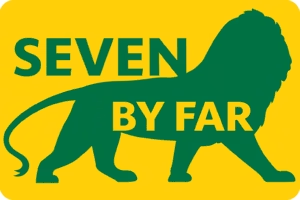Murchison Falls Conservation Area (MFCA) comprises Murchison Falls National Park and Bugungu and Karuma Falls Wildlife Reserves. This is where the Nile explodes through a narrow gorge and cascades down to become a placid river whose banks are thronged with hippos and crocodiles, waterbucks and buffaloes. The vegetation is characterized by savannah, riverine forest, and woodland. Wildlife includes lions, leopards, elephants, giraffes, hartebeests, oribis, Uganda kobs, chimpanzees, and many bird species.
BIRD WATCHING
Species commonly seen between Paraa Rest Camp and the ferry crossing are the blue-naped mousebird, spotted mourning thrush, silver bird, bluff-bellied warbler, black-headed batis, black-headed gonolek, chestnut-crowned sparrow-weaver, vitelline masked weaver, and green-winged ptyilia. This is probably the best site for the localized white-rumped seed-eater.
Nocturnal species common in this area are spotted, and Verreaux’s owls and a plethora of spectacular nightjars, such as the long-tailed and pennant-winged nightjar (especially between March and September) and the mind-blowing standard-winged nightjar (November–February). If you have a portable spotlight, you may be able to organize a nocturnal boat trip on the Nile in search of the White-backed Night Heron and Pel’s Fishing Owl.
Other species include the Goliath Heron, Saddle-billed Stork, Grey-crowned Crane, and Long-toed Plover, as well as the African Fish Eagle and African Skimmer. An exciting record was that of a Fox’s Weaver, Uganda’s only endemic bird. and many more.
GAME DRIVES
In the cool early morning on the Buligi, Albert and Queen’s tracks north of the river Nile before the sun climbs too high, you will see plenty of game. At Nyamsika Cliffs you can picnic, enjoy the view, and watch elephants and other game on the grassy hillsides and the sand river below. Go well prepared for a four-hour drive. Ensure you are accompanied by a guide.
LAUNCH TRIPS ON THE NILE
One of the highlights of a visit to the Conservation Area is the launch trip from Paraa to the foot of Murchison Falls. Hippos and crocodiles are abundant, and you will see elephants, buffaloes, waterbucks, and birds like herons, cormorants, ducks, bee-eaters, fish eagles, kingfishers, and the rare shoebill. The trip from Paraa to the Falls and back takes about three hours. A boat trip to the Delta, where the Victoria Nile engorges into Lake Albert, leads through papyrus swamps. The trip takes about four to five hours, and you will see a similar variety of animals and birds.
SPORT FISHING
Murchison Falls Conservation Area offers the opportunity to explore the wild on foot.
Nile perch and tiger fish provide an exciting challenge to anglers. Fishing is available in the river above and below the falls. Do bring your own fishing equipment.
NATURE TRAILS
A trail at Paraa winds through riverine forest, gullies, and low hills. Animals, birds, and plants can be closely and quietly observed. Nature walks are offered at Rabongo Forest, Top of the Falls, and Kaniyo Pabidi.
TOP OF THE FALLS
Trails around the top of the falls go right up to the water’s edge. You have the opportunity to hike to the top of the falls from the boat landing and get close to the narrow gorge through which the river plunges.
KANIO PABIDI
Kanio Pabidi is an undisturbed area of natural forest within Budongo Forest Reserve, where you can walk beneath mature mahogany and ironwood trees. Chimpanzee tracking is the most famous activity. You certainly see many forest birds, including the chocolate-backed kingfisher, the white-thighed hornbill, and Puvel’s illadopsis, found nowhere else in East Africa! Kaniyo Pabidi is on the Masindi–Paraa road, 8 km from the Kichumbanyobo gate. There is a campsite where water and firewood are available. Do bring everything else you may need. Kaniyo Pabidi is privately managed by the Forestry Department.
RABONGO FOREST
Rabongo Forest Ecotourism Centre nestles in an island of tropical riverine forest in the southeast of the conservation area. The forest is surrounded by savanna grassland and is a one-and-a-half-hour drive from Paraa. The guide will help you explore the forest on foot, spotting primates like black & white colobus monkeys, red-tailed monkeys, baboons, and occasionally chimpanzees, identifying animals, birds, medicinal plants, and trees. You can picnic and camp by the Wairingo River or stay in the well-equipped forest cottages.
ACCOMMODATION
Campsites are available at Top of the Falls, Rabongo Forest, and Paraa; toilets or pit latrines and showers or bathing shelters are provided at these sites. Traditional and self-contained bandas are available at Paraa Rest Camp. Meals and beverages are offered. In addition, cottages are provided at Rabongo Eco-Tourism Centre. More luxurious accommodation is available at Nile Safari Camp, Sambiya River Lodge, and Paraa Lodge Safari Lodge.




